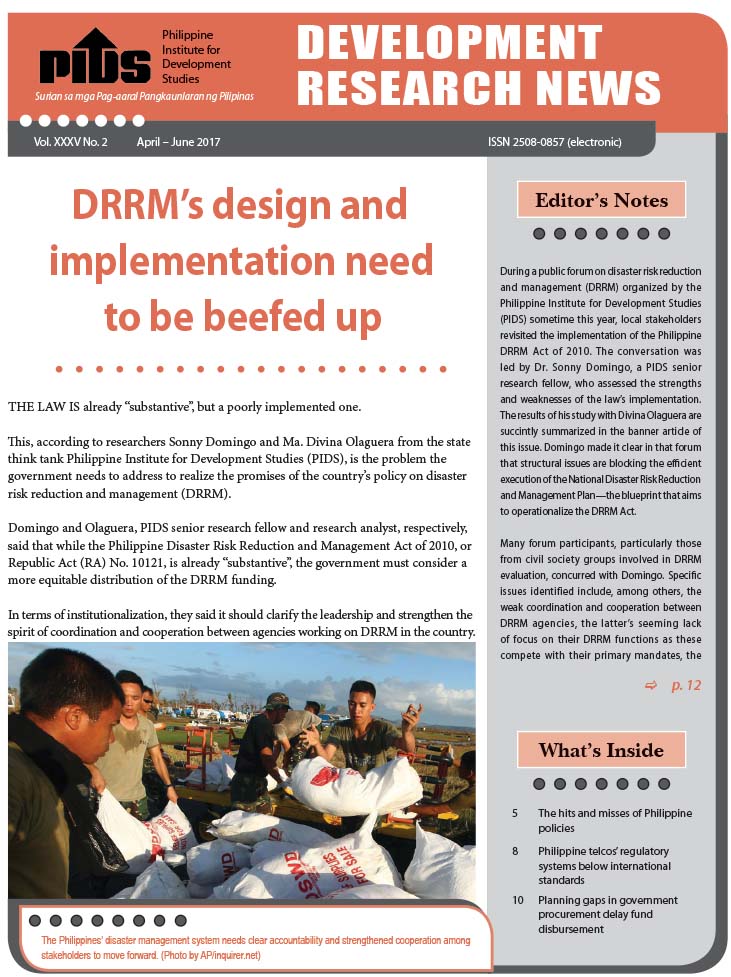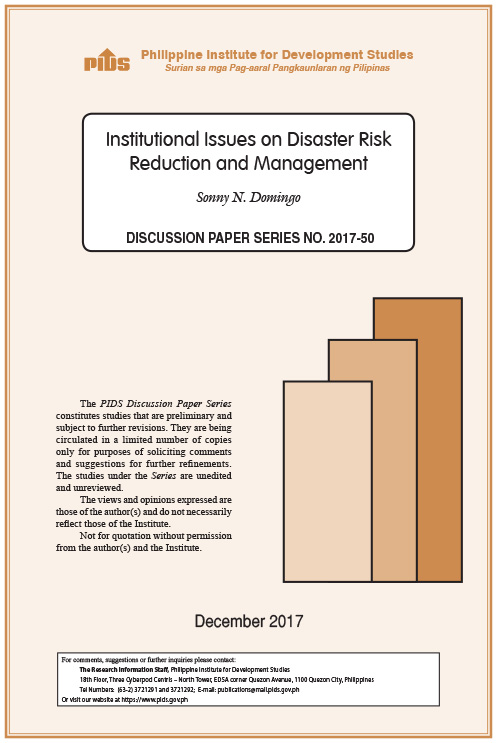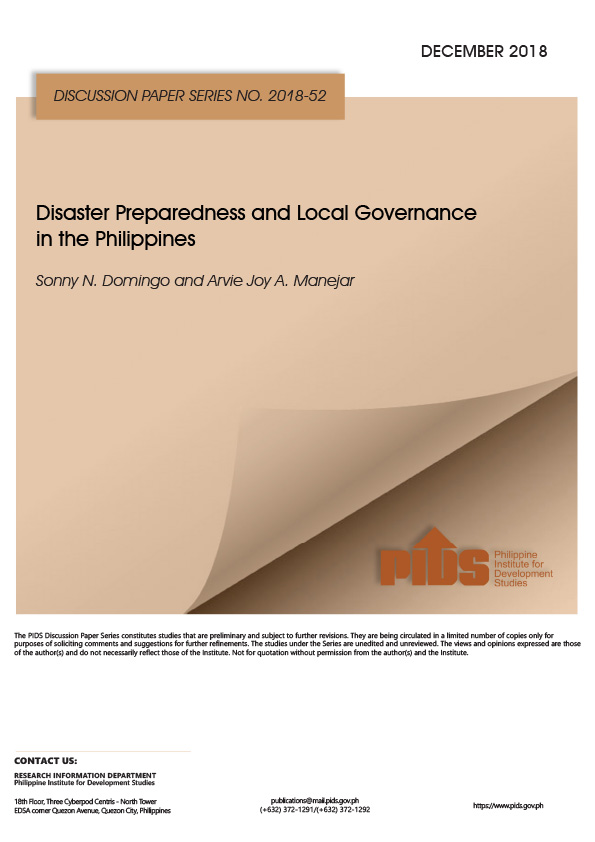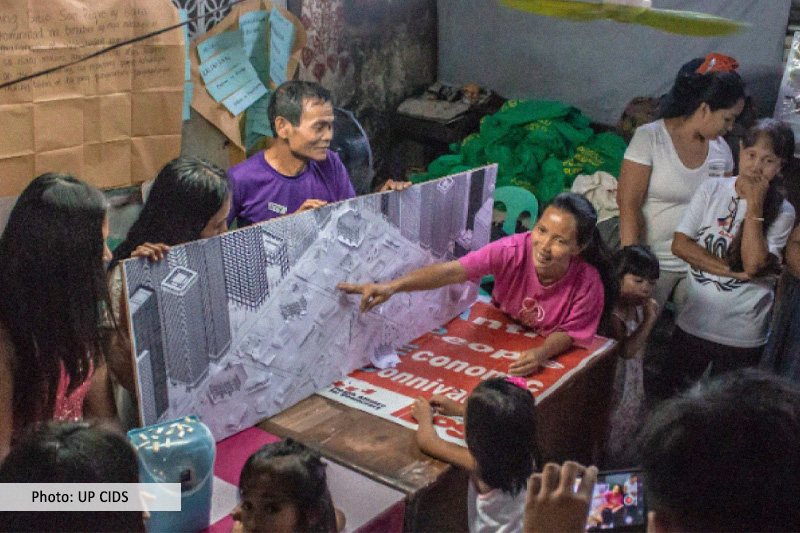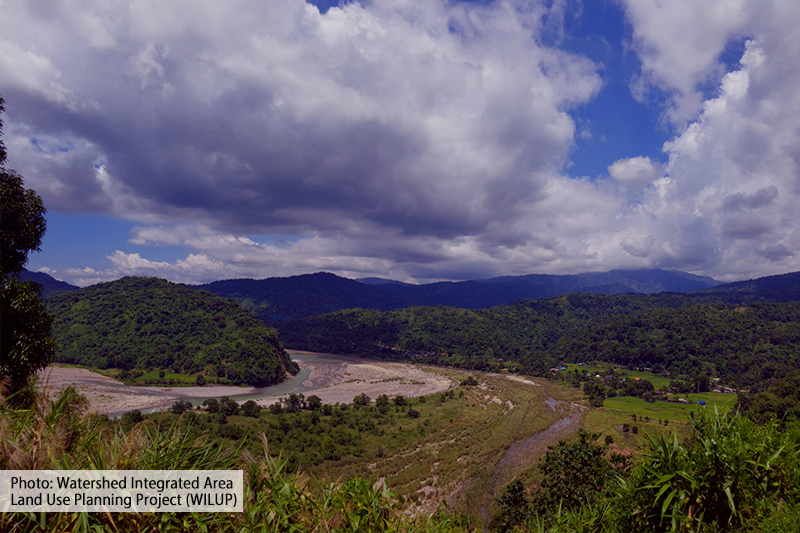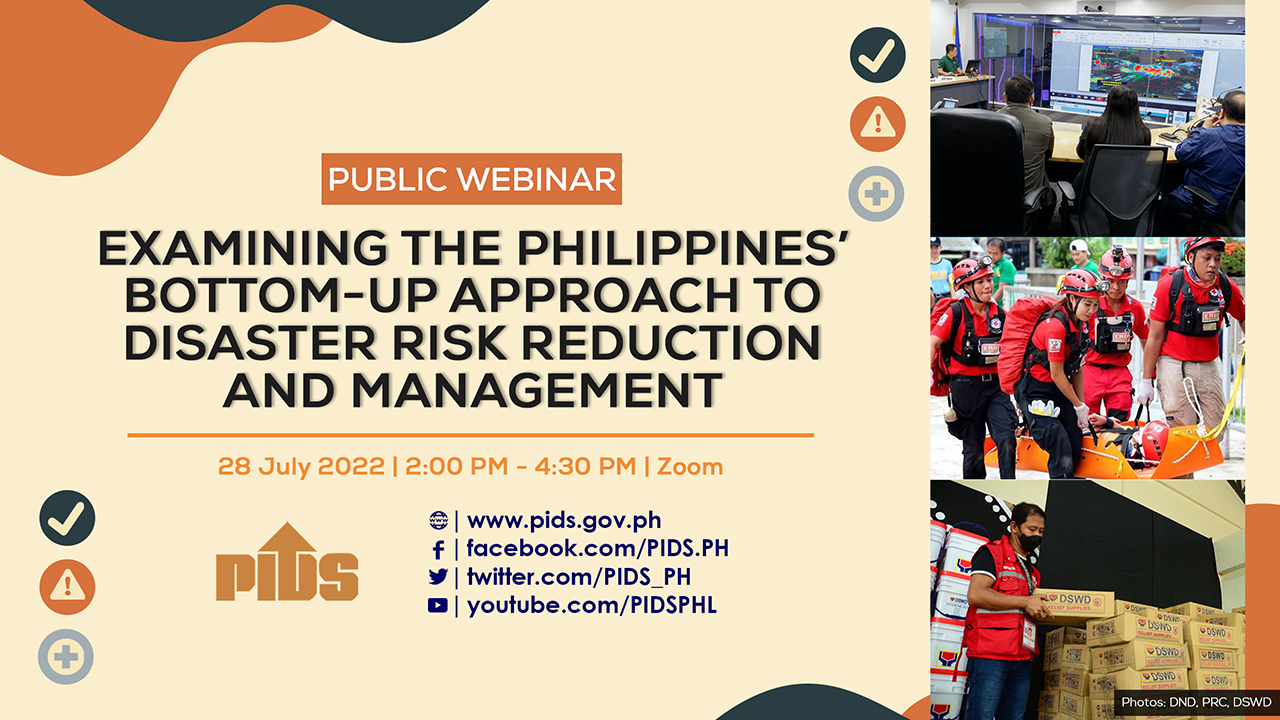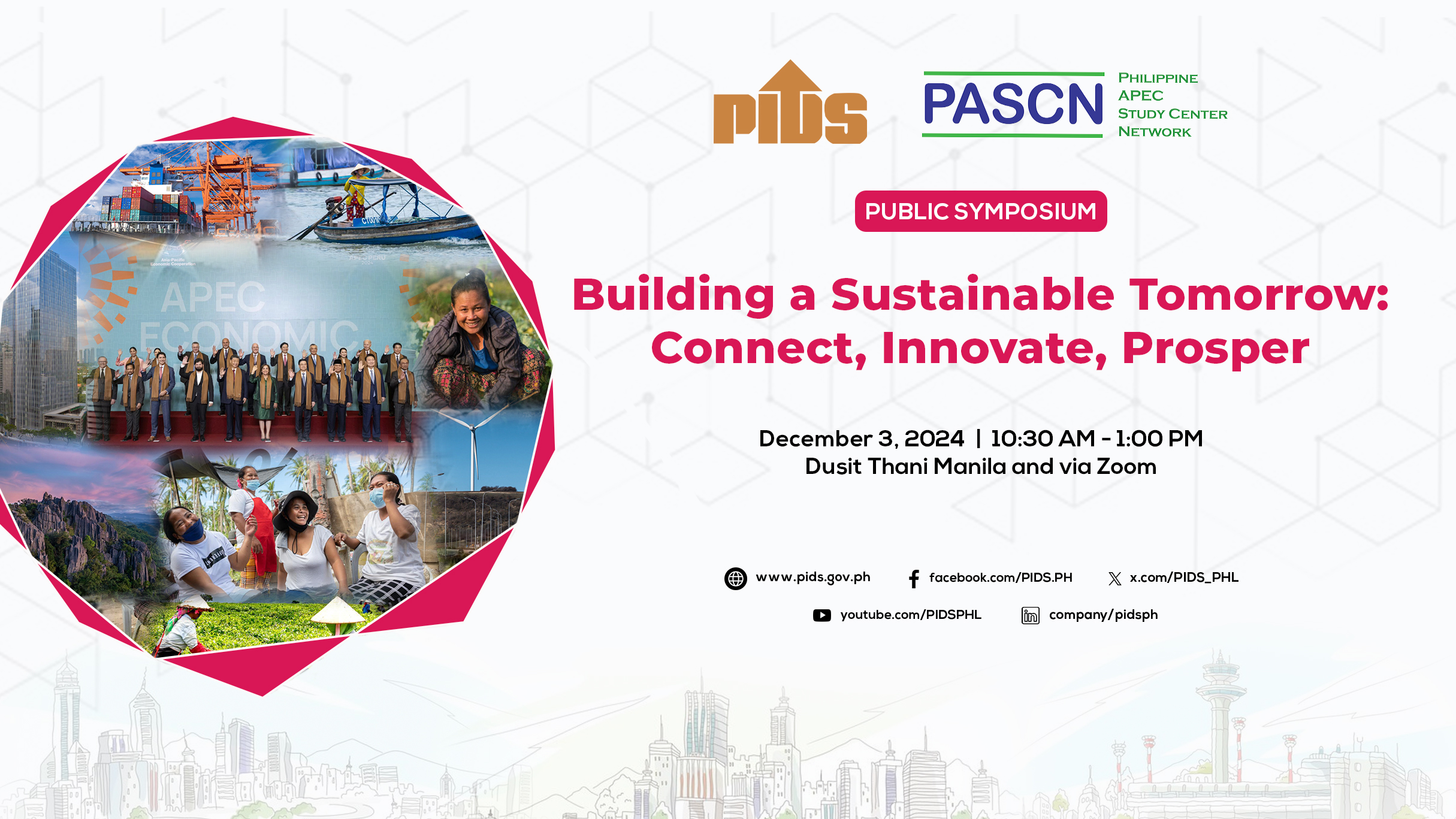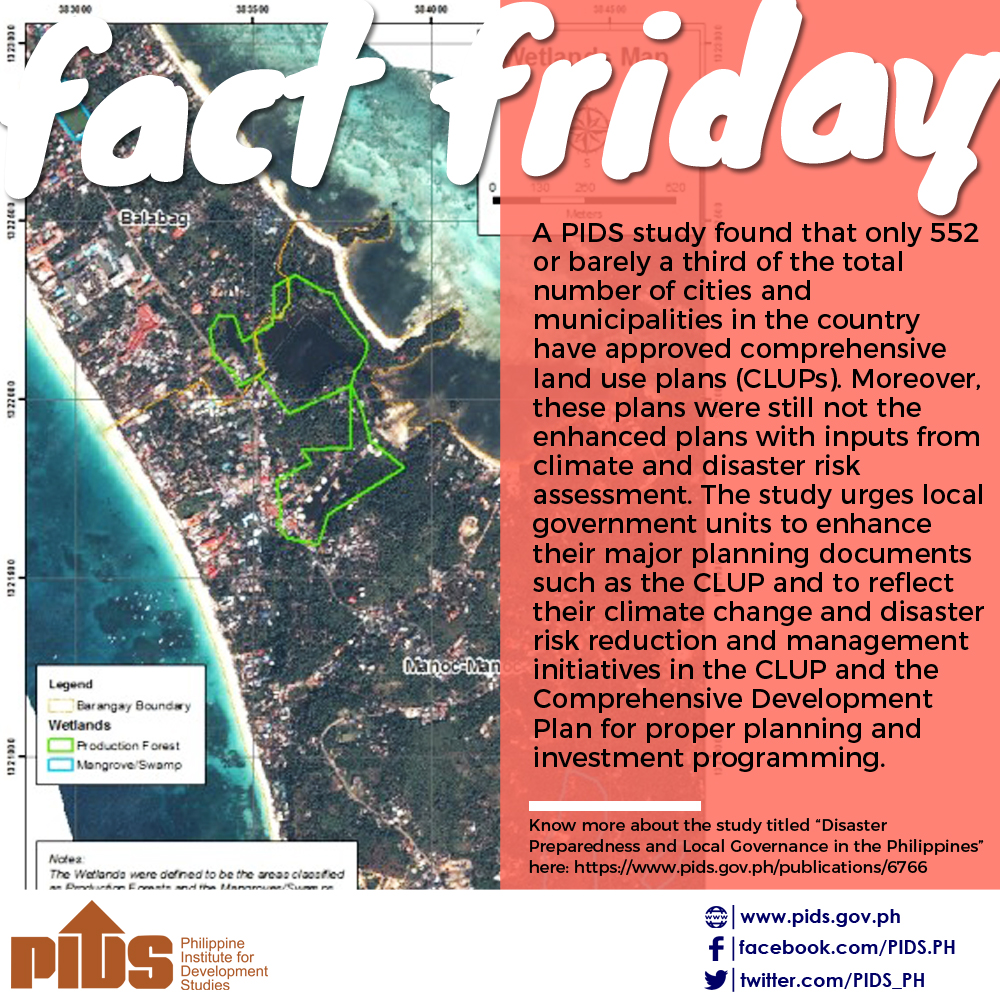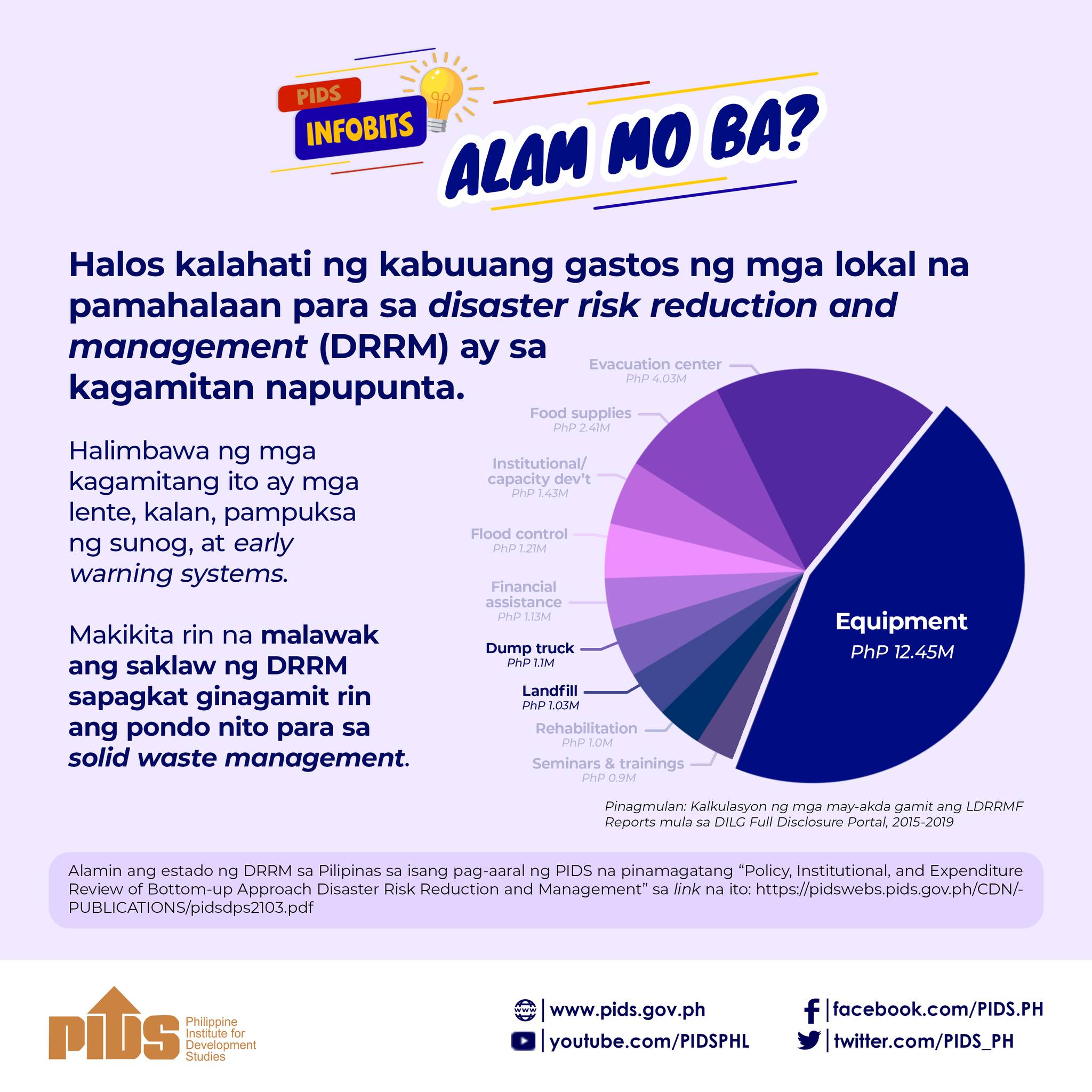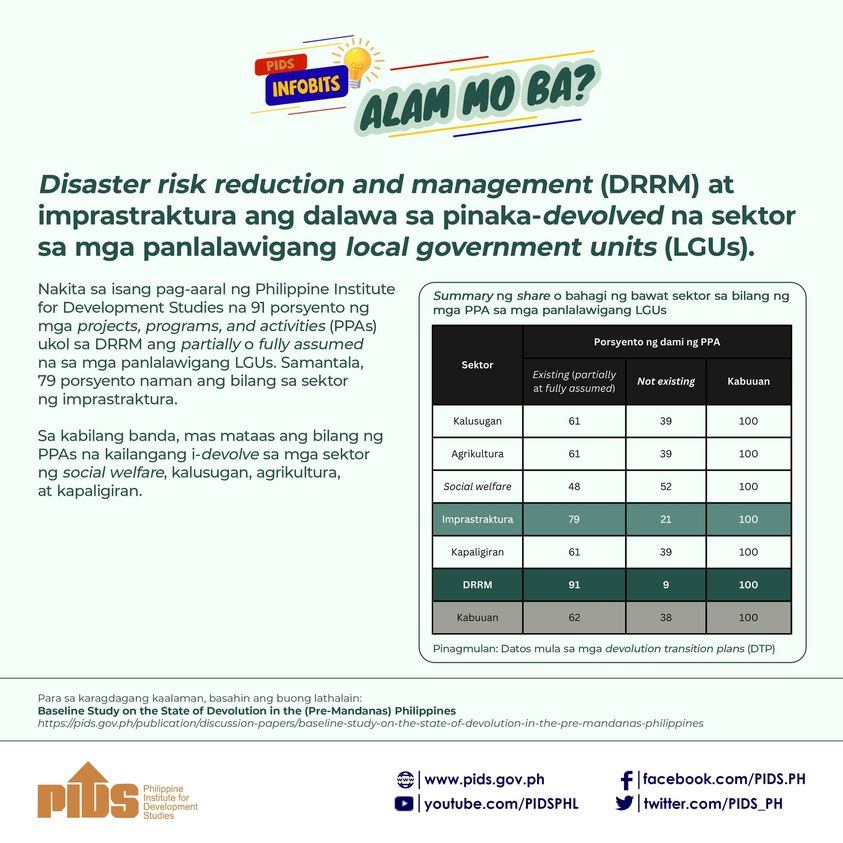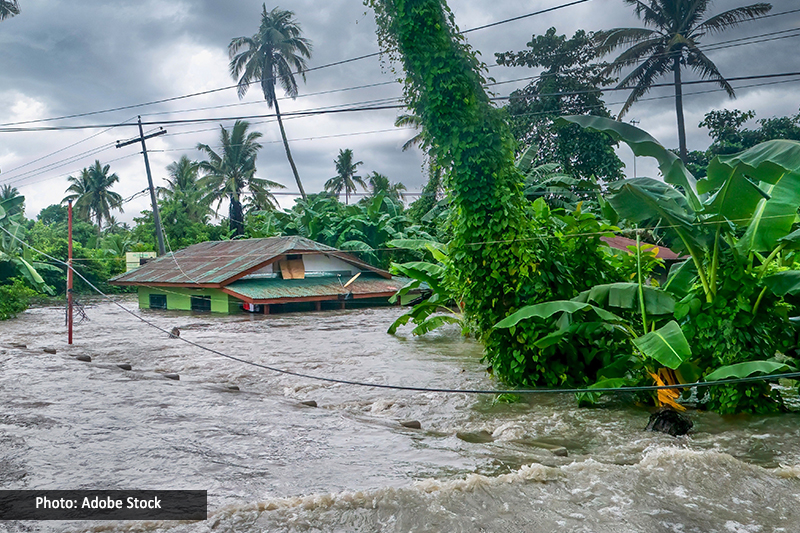
It is imperative to foster collaboration among stakeholders, employ innovative approaches, and invest in robust disaster risk governance systems to bolster the Philippines' resilience against future calamities.
This was stressed by experts in a recent webinar conducted by the Philippine Institute for Development Studies (PIDS) titled "Act Now or Pay Later: Enhancing Disaster Risk Governance for a Resilient Philippines". Organized by the Socioeconomic Research Portal for the Philippines (SERP-P) project of PIDS in support of National Disaster Resilience Month, the virtual event sought to promote awareness of disaster risk governance and explore strategies to strengthen the country’s resilience based on the findings and recommendations of studies by some of SERP-P’s partner institutions.
Dr. Marie Ela Atienza of the University of the Philippines (UP)-Center for Integrative and Development Studies and UP-Department of Political Science presented her study on "Enhancing Disaster Risk Governance and Resilience: Lessons from Supertyphoon Yolanda”, which highlighted the importance of multilevel governance structures for disaster risk reduction management (DRRM) based on the country’s experience during the said disaster.
“The national government played a significant role in disaster response, and coordination with international agencies was generally good. However, tensions between the government and international nongovernment organizations and parallel efforts and duplicated aid were observed,” she said.
Atienza emphasized the need for a comprehensive and coordinated approach to disaster risk governance, with a focus on community involvement and empowerment, to enhance resilience and response capabilities. She added that strengthening international coordination and response, including within the Association of Southeast Asian Nations, is a vital strategy.
Meanwhile, fellow presenter and Congressional Policy and Budget Research Department (CPBRD) Executive Director Novel Bangsal highlighted the need to improve budget response capacity in the aftermath of disasters in the public sector. His discussion focused on the government’s fiscal response to natural disasters in the context of disaster risk financing and insurance (DRFI) in the Philippines, as detailed in his policy brief “Managing a National Disaster Trust Fund in the Philippines”.
"Based on catastrophe risk modeling, the average annual loss to public and private assets caused by earthquakes and typhoons has been estimated to be approximately PHP 176.6 million, with earthquakes accounting for PHP 43.5 billion and tropical cyclones about PHP 133.2 billion. This underscores the urgency for the public sector to enhance its budget response capacity following a disaster," he asserted.
He emphasized that effective disaster financing and insurance mechanisms can significantly improve fiscal management, ensuring prompt and sufficient financial capacity and the swift release of funds.
One of the study’s recommendations is the creation of a National Disaster Trust Fund to secure advance financing for disaster recovery, including crucial reconstruction operations. This would consist of multiple accounts for specific applications like reconstruction and resistance and would encourage cost-sharing arrangements with local governments to reduce disaster losses. Bangsal identified possible sources for the disaster trust fund, such as the contingent fund and the NDRRM fund.
For his part, PIDS Senior Research Fellow Dr. Sonny Domingo presented his study on “Looking at Payments for Ecosystems Services in the Philippines” that explored the potential of payment for ecosystem services (PES) as a tool for disaster risk reduction and climate change adaptation. PES involves voluntary transactions where buyers pay providers for environmental services, creating incentives for sustainable resource management.
"We have extensive damages and casualties from disaster events, and unfortunately, we have inefficient markets on environmental services provision. This makes PES a good option moving forward to have sustained interventions at the local and national levels," he explained.
Domingo recommended various ways to institutionalize PES and related initiatives, including capitalizing on evolving PES definitions, replicating successful PES arrangements, and increasing private sector involvement.
The three studies collectively called for a strengthened disaster risk governance framework in the Philippines and enhanced resilience. Urgent and concerted efforts are needed to establish an efficient and robust DRRM capable of effectively mitigating the effects of disasters on human lives, infrastructure, and the natural environment.
Watch the webinar at https://fb.watch/m0qTNKan2i/ or https://youtu.be/oS2bSY5ySCA.
For more videos of PIDS events, go to https://www.pids.gov.ph/videos. ###

